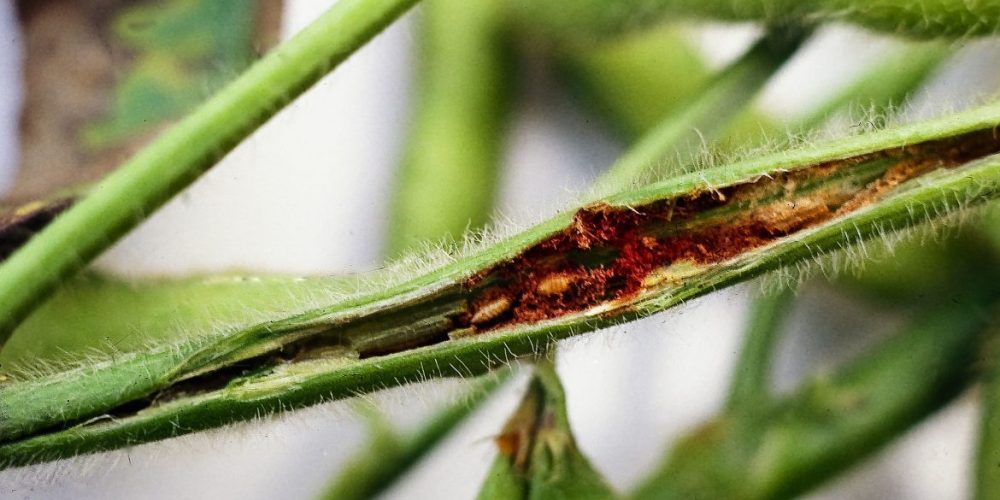Table of contents of the article
ToggleThe bean fly is a serious agricultural pest that affects the growth and productivity of bean crops, requiring effective measures to control it. In this article on your website, World of Plants, we will review the life cycle of this fly and ways to prevent it to protect the crop.
Symptoms of bean fly
Name of the diseaseBean leaf miner
Scientific name: Melanagromyza phaseoli
Type of disease: Insect type
Disease family: Agromyzidae
The larvae feed in the leaf tissues, creating winding tunnels between the two skins of the leaf until they reach near one of the veins of the leaf. Then they head to the neck of the leaf and enter under the skin of the stem. When they reach near the surface of the soil, they have reached their full growth and cannot be near the surface of the soil. The infection leads to yellowing of the leaves, the formation of pods decreases, or they may become atrophied, and the infected plants are susceptible to breakage.
Causes of bean fly
The symptoms are caused by larvae and adults of the bean fly, one of the most destructive pests in the world. They are widespread insects in tropical and subtropical regions of Asia, Africa, Hawaii and Australia.
In some cases, infestation can lead to losses of 30-50%. The severity of damage appears to be seasonal, leading to a significantly higher rate of plant death in the dry season while it is lower in the rainy season (80% versus 13%, respectively). .
Both adults and larvae cause severe damage, especially to seedlings.
Suitable conditions for the spread of bean fly
Conditions for the spread of infection: July and August crops.
Bean fly development cycle
The female lays eggs individually under the upper epidermis of the leaflets, on the first vegetative leaf, and the eggs hatch in the inner tissues of the leaflets. The new larvae feeds from the epidermis of the leaflets, creating winding silver-colored tunnels that indicate the void that the larvae creates behind it. The larvae move to the middle vein of the leaf and from there to the sheath of the compound leaf, then the neck, then the stem until they reach near its end in the area between the roots and the stem, where they turn into pupae. The pupation period lasts 8-13 days. Then the adult insects emerge to mate and repeat the life cycle. The pupae can be identified by the presence of swellings on the leg under which the pupae live, and the leg becomes easily breakable during the generation period of 19 - 41 days.
Number of generations: 10-12 generations per year.
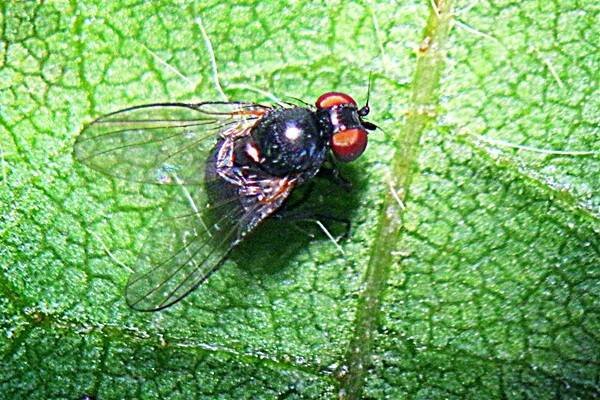
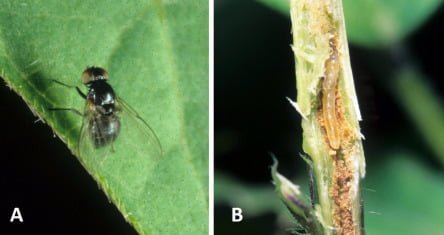
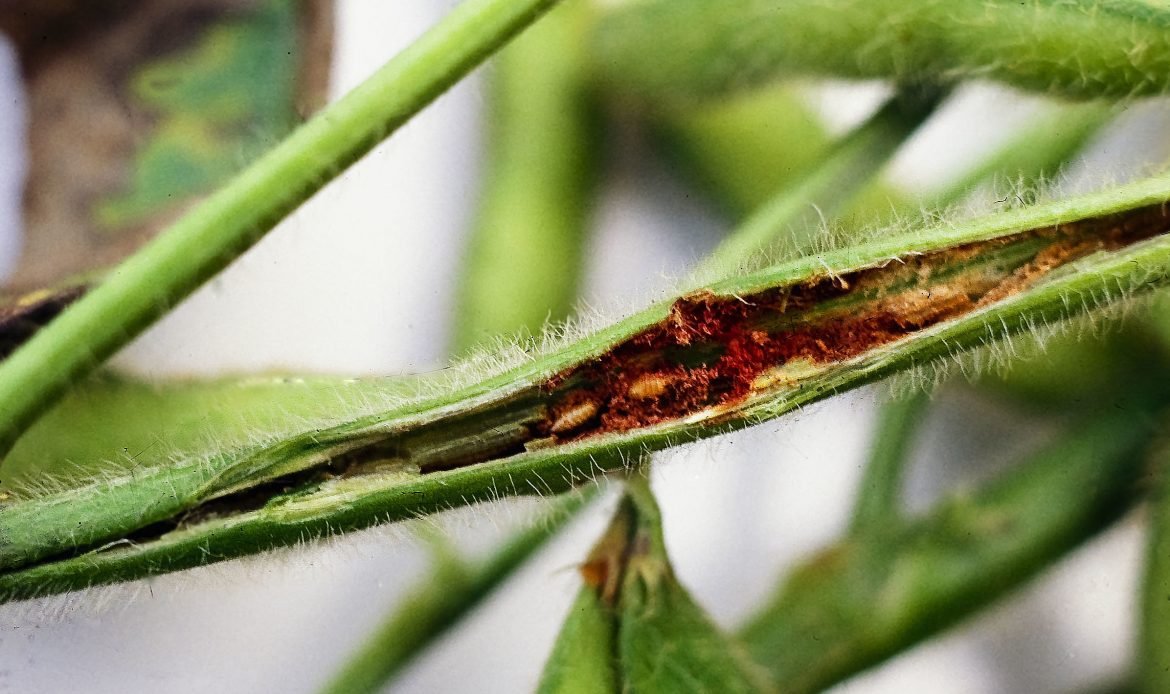
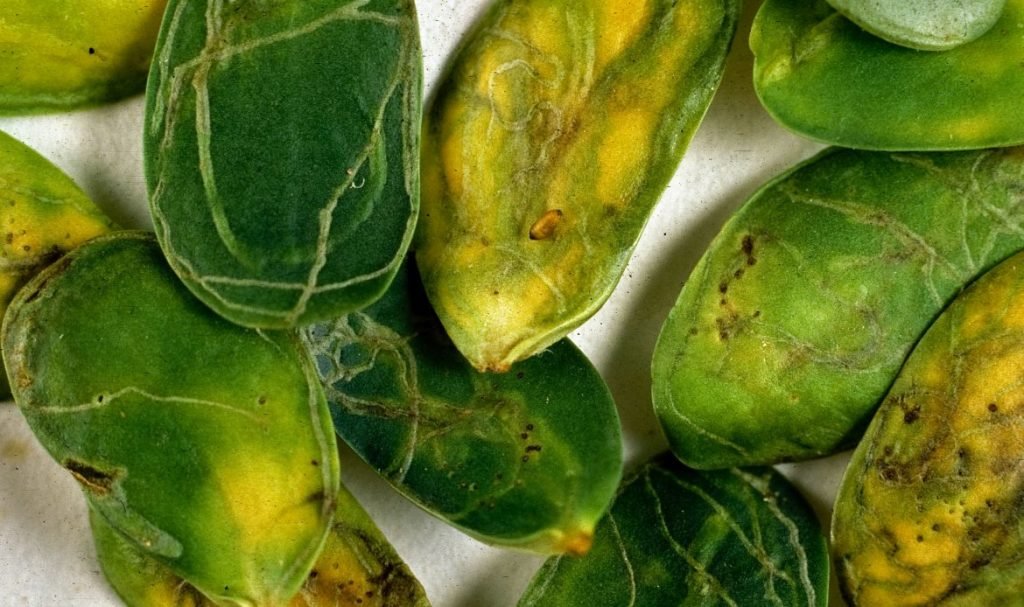
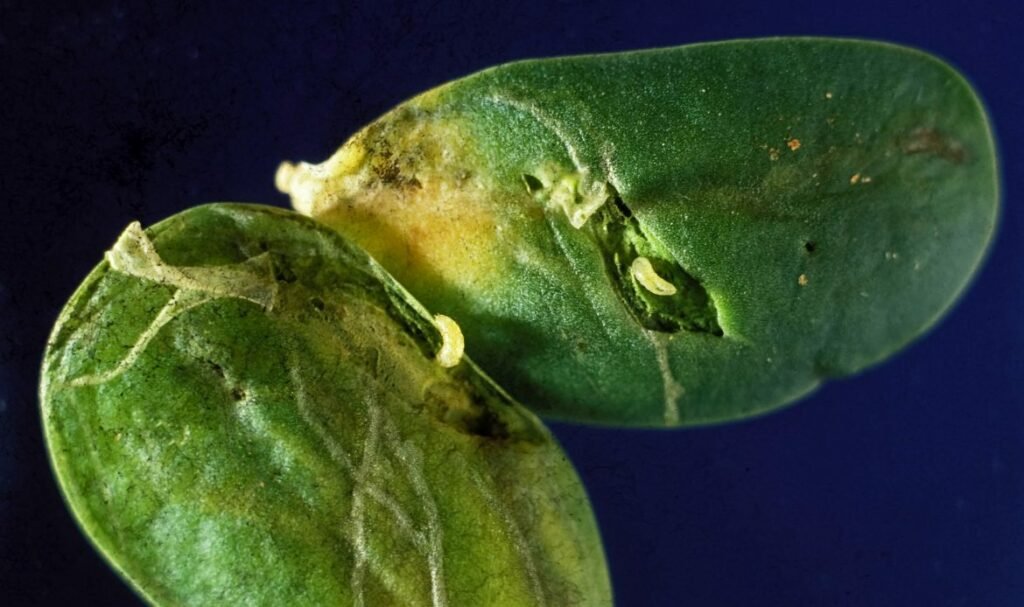
Losses of disease spread
This fly has been seen in bean fields in Wadi Shuaib and the Jordan Valley, especially in greenhouses and also in the open field. The insect may cause swelling and splitting in the stem.
In severe attacks, the plant can seize (collapse), wither, and die. If the plant survives, it will have reduced growth and yield. It may produce adventitious roots (roots formed from non-root tissue) to compensate for the damage. The return loss can reach 100%.
Control strategy
- Mechanical control
- Physical control (tillage, sanitation, pruning, solarization)
- Insecticides
Preventive measures to prevent the occurrence of the disease
- Getting rid of weeds and taking care of various agricultural operations.
- Collect infected leaves and dispose of them by burning if possible, if the infection rate is small.
- Caring for plants in terms of fertilization and irrigation in order to resist infection.
- Determine the date of emergence of the adult insect and perform preventive spraying before laying eggs in infested areas.
Chemical control recommendations
- Acetamiprid 20%
- Amdacloprid 20%
Anti-membership recommendations
There are many natural enemies of flies. Many wasps that parasitize on caterpillars, including the braconid wasp of the Obius species, are widely used in both Asia and Africa. Two species, Obius fascioli and Obius omportatus, were introduced to Hawaii in 1969 from East Africa, but some bean fly infestations still occur. The death rate of seedlings in some areas reaches 90%. Products based on fungal fly pathogens have also been tested as a possible tool for fly control in East Africa.
In conclusion, we would like to note that we, at the world of plants website, offer you all the necessary services in the world of plants, we provide all farmers and those interested in plants with three main services::-
- Artificial intelligence consulting service to help you identify diseases that affect plants and how to deal with them.
- Blog about plants, plant diseases and care of various crops ... You are currently browsing one of her articles right now.
- An application that provides agricultural consultations to clients, as well as a service for imaging diseases and knowing their treatment for free – Click to download the Android version from Google Play Store، Click to download the IOS version from the Apple App Store.
References
Bean fly.. Advisor to the Minister of Agriculture sets an integrated control program - misrelzraea
Bean fly - plantix
Bean fly control – How to recognize, prevent and manage this common legume pest – bioprotectionportal
Bean fly - almerja
Bean fly.. Dr. Muhammad Fahim explains the symptoms of infection and methods of control - agricultureegypt.com




